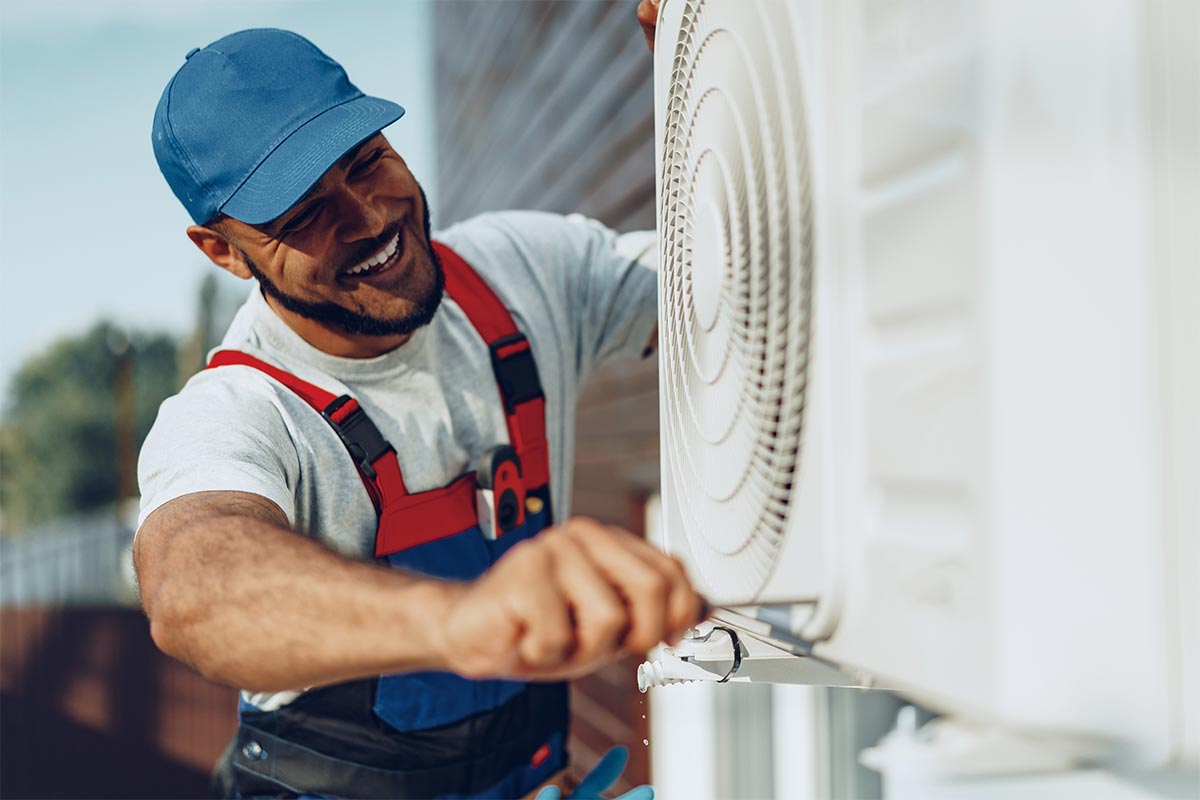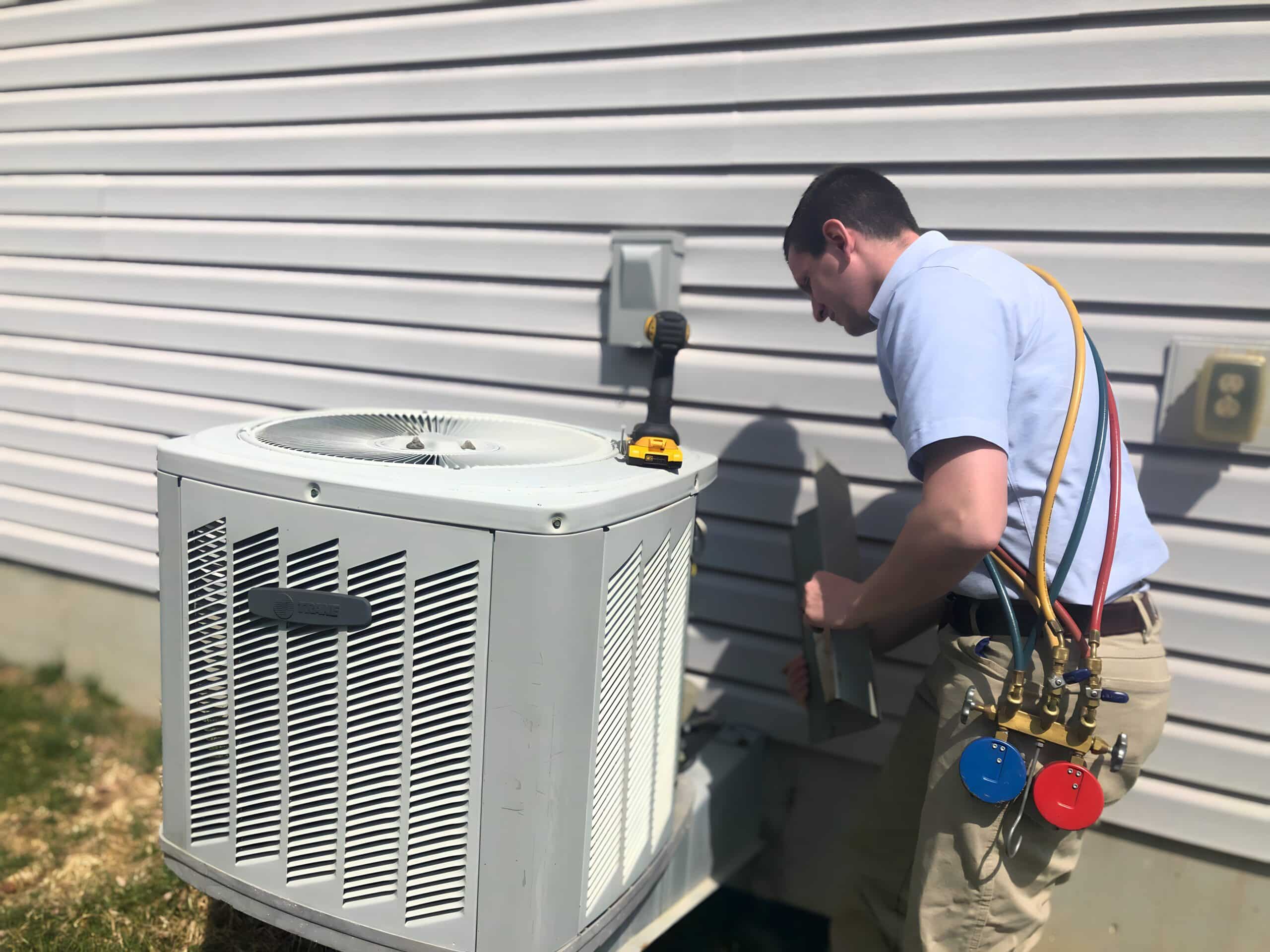Professional vs. DIY heat pump service: What You Need to Know
Professional vs. DIY heat pump service: What You Need to Know
Blog Article
Just How a Heatpump and Heating System Interact to Optimize Your Home's Heating Efficiency
Comprehending how a heat pump and heater collaborate is necessary for homeowners seeking effective home heating solutions. Each system has its staminas, providing a well balanced strategy to home convenience. The heat pump stands out in moderate temperature levels, while the furnace provides quick warmth throughout extreme cold. This synergy not only lowers power expenses but likewise enhances the lifespan of both home appliances. What aspects influence this collaboration, and exactly how can property owners optimize their advantages?
Understanding Warmth Pumps: Just How They Function
Although lots of people may be not familiar with their internal operations, heatpump play an essential function in modern-day heating unit. These tools operate by moving heat from one place to an additional, making use of the concepts of thermodynamics. In chillier months, a heatpump extracts warmth from the outdoors air, ground, or water, and transfers it inside your home to warm the home. Alternatively, throughout warmer months, it can reverse the procedure, serving as an air conditioner by expelling warmth from inside to the outside.Heat pumps consist of an evaporator, condenser, expansion, and compressor valve. The refrigerant within the system absorbs warmth as it vaporizes at reduced temperature levels and pressures. The compressor after that boosts the pressure and temperature of the cooling agent, permitting it to release warmth as it condenses. This effective procedure can greatly decrease power usage compared to standard home heating methods, making heatpump a lasting option for environment control in homes.
The Role of Heating Systems in Home Heating
Furnaces play an essential function in home heating by providing a trusted resource of heat during the chillier months. They run by generating heat via combustion or electrical resistance, dispersing it throughout the home through ducts or glowing systems. The effectiveness of a heating system is typically determined by its Annual Fuel Use Efficiency (AFUE) rating, which suggests how efficiently the unit transforms fuel right into heat.Furnaces can use various energy resources, consisting of natural gas, gas, electrical power, or oil, enabling home owners to choose the most ideal alternative for their requirements. Unlike heatpump, which may struggle in severe chilly, heating systems maintain consistent performance, making sure that interior temperatures remain comfy regardless of exterior problems. In addition, contemporary heaters typically come furnished with advanced modern technology, such as smart thermostats and variable-speed blowers, enhancing their performance and responsiveness. This adaptability makes heaters an important element in comprehensive home heating strategies.

Benefits of Using Both Systems Together
Combining the staminas of both heaters and heatpump can result in a more efficient and efficient home heating option. Utilizing both systems allows house owners to capitalize on the heatpump's power effectiveness throughout milder temperatures while depending on the furnace for even more severe cold conditions. This double technique can significantly lower energy expenses, as warmth pumps eat much less electrical energy than standard heating methods when temperature levels are moderate.Additionally, utilizing both systems together can improve comfort levels in the home. Heat pumps can supply consistent, also home heating, while heating systems can promptly elevate ambient temperature levels when needed. The combination of both systems can extend the life expectancy of devices by decreasing wear and tear on each device, as they share the workload. Eventually, homeowners can delight in a well balanced, economical heating service that adjusts flawlessly to varying climate condition, guaranteeing a cozy and inviting home throughout the winter months.
Exactly How Heat Pumps and Furnaces Complement Each Various Other
When home owners incorporate heat pumps and furnaces, they produce a complementary home heating system that maximizes effectiveness and comfort. Warm pumps run by transferring warmth from the outdoors air or ground, making them extremely efficient in modest climates. They excel during milder temperatures, offering economical heating. Alternatively, furnaces produce warmth with combustion or electrical resistance, providing strong, prompt heat throughout severe chilly conditions.The combination of these two systems enables vibrant modifications based upon temperature variations. During warmer months or milder winter days, the heatpump can take the lead, preserving energy and decreasing expenses. As temperatures decline, the heating system can flawlessly involve, making certain consistent warmth throughout the home. This synergy not only maximizes power usage however additionally improves the life expectancy of both systems, as each unit runs within its perfect efficiency variety. Together, they create a well balanced atmosphere that adjusts to varying environment needs.
Enhancing Efficiency: Tips for Homeowners
Homeowners can boost their home heating performance through several useful techniques. Developing a normal upkeep routine, integrating clever thermostat technology, and carrying out efficient insulation and sealing services are crucial actions. These actions not only enhance comfort but additionally lower power costs.
Regular Maintenance Set Up
To assure optimal home heating performance, establishing a regular maintenance timetable is vital for any home. Property owners ought to prioritize routine evaluations of both warmth pumps and furnaces to establish peak performance. This includes transforming air filters every one to 3 months, as blocked filters can greatly reduce performance. In addition, scheduling specialist maintenance at the very least as soon as a year enables specialists to determine and resolve possible issues before they intensify. Home owners should additionally clean the warmth pump's exterior unit to avoid particles accumulation that can impede airflow. By adhering to a regular maintenance schedule, property owners not just enhance their furnace' effectiveness yet likewise extend their life expectancy, leading to greater comfort and reduced power expenses throughout the colder months.
Smart Thermostat Combination
Integrating a wise thermostat right into a home heating system can greatly improve energy performance, especially as it enables exact control over temperature setups. These gadgets can find out the property owner's schedule and choices, automatically readjusting the temperature to maximize comfort while minimizing energy use. They can decrease home heating view it now throughout times when the home is empty, reducing unnecessary consumption. Numerous clever thermostats also offer real-time energy use information, making it possible for homeowners to make educated decisions about their home heating behaviors. Furthermore, remote access via mobile phone apps enables individuals to adjust setups from anywhere, making certain the home is warm upon return. In general, clever thermostat integration not only improves comfort however significantly adds to energy savings and performance.
Insulation and Sealing Solutions
Smart thermostats play a crucial function in energy efficiency, however their effectiveness can be considerably boosted by proper insulation and sealing options. Homeowners ought to prioritize protecting walls, attic rooms, and floorings to lessen heat loss. High-quality insulation products, such as spray foam or fiberglass, can substantially improve thermal resistance. Furthermore, sealing spaces around air ducts, doors, and home windows protects against cool see page air infiltration and warm getaway. Weatherstripping and caulking are effective approaches for dealing with these leaks - furnace replacement. Regular inspections for air leakages, in addition to making use of blower door tests, can aid determine problem areas. By spending in insulation and sealing, homeowners can maximize the performance of their heater, eventually bring about minimized power intake and Find Out More reduced utility expenses
Typical Myths Regarding Warm Pumps and Furnaces
What misunderstandings surround heatpump and furnaces? Lots of people erroneously think that warmth pumps are inadequate in cooler environments. Actually, modern-day heat pumps are designed to operate effectively even in reduced temperatures, supplying reputable heating throughout wintertime. Another usual misconception is that furnaces are always extra efficient than heatpump. However, this depends on the details power sources and efficiency scores of the devices in inquiry. Some may additionally think that utilizing both systems all at once is unneeded, but as a matter of fact, this combination can enhance home heating efficiency, specifically throughout extreme climate condition. Additionally, individuals typically think that heatpump require continuous upkeep, when in fact, they have comparable upkeep needs to traditional heater. By debunking these misconceptions, property owners can make even more enlightened decisions concerning their heating alternatives, ultimately leading to improved comfort and energy effectiveness in their homes.
Maintenance Factors To Consider for Combined Systems

Regularly Asked Inquiries
Can Warm Pumps Work Successfully in Exceptionally Cold Climates?
Heatpump can have a hard time in exceptionally cool climates due to lowered efficiency and warmth extraction constraints. Nevertheless, advancements in technology have resulted in models developed for much better efficiency in such problems, boosting their feasibility in extreme environments.
For How Long Do Warm Pumps and Furnaces Normally Last?
Warm pumps generally last 15 to two decades, while heating systems have a life expectancy of 15 to 30 years. Regular maintenance can extend their durability, making certain efficient procedure and minimizing the demand for premature substitutes.

What Is the Ordinary Cost of Installing Both Solutions?
The average price of installing both a heat pump and a heating system commonly varies between $5,000 to $10,000 - furnace replacement. Elements influencing this expense include system dimension, installation intricacy, and local labor rates
Are There Tax Incentives for Using Energy-Efficient Home Heating Equipments?
Several homeowners make inquiries about tax obligation rewards for energy-efficient heating systems. Different federal and state programs typically provide discounts or credit scores, encouraging the fostering of lasting modern technologies to minimize power usage and advertise environmental obligation.
How Do I Select the Right Dimension Heatpump and Heater?
Selecting the appropriate size heat pump and furnace involves calculating the home's square footage, taking into consideration insulation high quality, and assessing local climate. Consulting a specialist can assure perfect system efficiency and energy effectiveness based on particular needs. furnace replacement. Comprehending just how a heat pump and heater job with each other is crucial for house owners seeking efficient home heating solutions. In cooler months, a warmth pump essences heat from the outdoors air, ground, or water, and transfers it indoors to warm up the living space. When house owners integrate heat pumps and heaters, they produce a complementary heating system that takes full advantage of performance and convenience. Heat pumps operate by moving heat from the outside air or ground, making them highly efficient in modest environments. Warm pumps can battle in exceptionally cold environments due to decreased effectiveness and heat removal limitations
Report this page